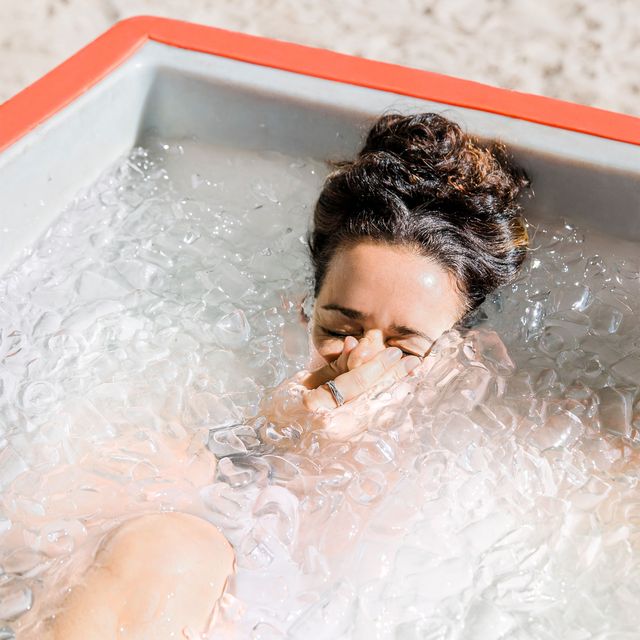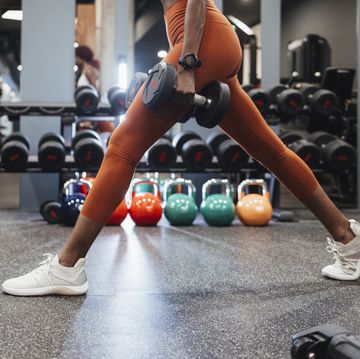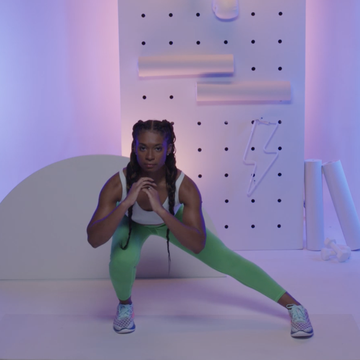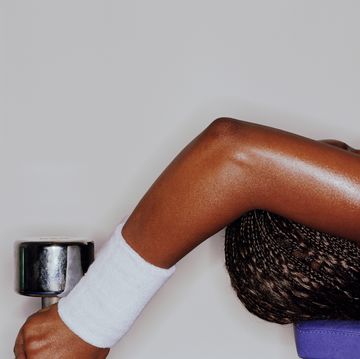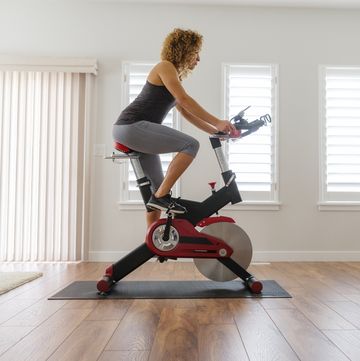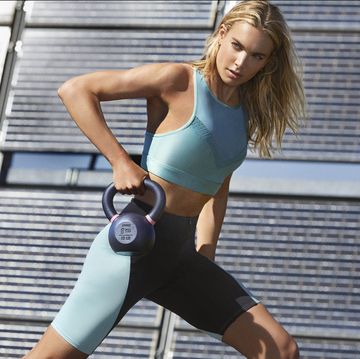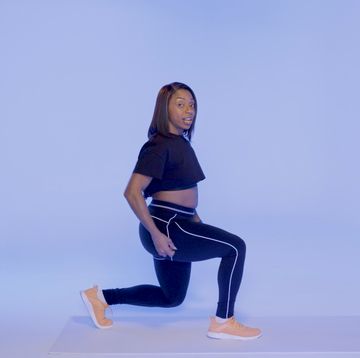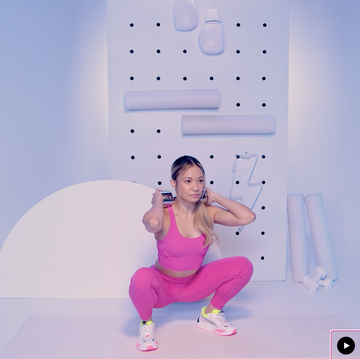Cold plunges are popping off on social media. If it seems like everyone—athletes, biohackers, celebs, and your bestie—is taking the plunge, you're not wrong. Those wellness perks are real, too.
The thinking is, when you dip for several minutes in frigid water, the sudden change to your body temp can ignite physiological processes that lead to wins such as improved athletic performance, a revved-up metabolism, and a perkier mood.
Sounds like a practice with payoffs, right? Brands like Plunge, Ice Barrel, Deep Dive Wellness, and NuRecover are making the practice easier to execute at home with refillable, insulated “pods” that fit one person and keep the water chilly (they range from $100 to the thousands).
Meet the experts:
Kelcie Wittman, DPT, is a Colorado-based board-certified clinical specialist in sports physical therapy and an American Physical Therapy Association spokesperson.
Elizabeth Gardner, MD, is an associate professor of orthopedic surgery at Yale School of Medicine.
Leada Malek, PT, DPT, CSCS, is a San Francisco-based board-certified sports physical therapist.
The many cold plunge benefits certainly sound impressive, but the research on cold-water immersion is still limited. Any too-good-to-be-true claims (like freezing away fat and transforming metabolism) are just that.
Here are the expert-approved mental and physical takeaways from cold plunges that make it worth a dip and how to get started to enjoy all of them yourself.
What is a cold plunge?
A cold plunge is "essentially one form of cryotherapy that involves submerging the body or body segment in cold water, the temperature can vary," says Kelcie Wittman, DPT, a Colorado-based board-certified clinical specialist in sports physical therapy and an American Physical Therapy Association spokesperson.
The temperature can vary, but it's usually somewhere in the fifty-degree Fahrenheit range, adds Elizabeth Gardner, MD, an associate professor of orthopedic surgery at Yale School of Medicine. (BTW, a cold shower can give you some of the same benefits of fully submerging in a tub. That is, if the water is cold enough, she says.)
What are the benefits of a cold plunge?
- Reduce muscle soreness. Like icing an ache, a quick icy dunk causes blood vessels to constrict, decreasing blood flow to muscles and reducing swelling. The evidence that this reduces muscle soreness is mostly anecdotal, though, says Wittman.
- Improve recovery. While there, the recovery benefits “are small and in the short term,” adds Leada Malek, PT, DPT, CSCS, a San Francisco-based board-certified sports physical therapist. Muscular power bounced back and participants also felt more recovered following a cold dip after high intensity exercise, according to a recent review in Sports Medicine.
- Boost athletic performance. Plunging regularly may make you feel you need to put in less effort to achieve the same level of performance. Note, though, that this is a subjective measure; it’s not clear whether there is a physiological benefit happening (but the mind is powerful!).
- Workouts feel easier. The strongest evidence out there supports the idea that cold plunges can “improve your rate of perceived exertion,” says Wittman.
- Help mental wellbeing. This area is promising, but researchers and docs don’t fully understand the brain effects of these dips. Shivering in the tub and conquering something hard may help produce the same feel-good hormones as, say, your a.m. run—which could make you feel ready to take on the world.
- Elevate mood. “There is plenty of anecdotal evidence from people who feel like they have elevated mood and energy afterward,” says Gardner. “It’s probably an endorphin-mediated pathway.” Plus, cold exposure causes the prolonged release of dopamine, which can bump up mood and keep it there.
- Increase energy. If you've jumped in a cold shower (intentionally or not), you know the invigorating effect already. Significant increases in epinephrine (a neurochemical that makes us feel alert) from just 20 seconds in very cold water (~40°F), studies show.
- Better stress response. Cold water immersion has a positive effect on stress regulation, according to a review published in International Journal of Circumpolar Health. The thinking is, choosing to stay in uncomfortably cold water helps your bod build resilience and deal with other stressors better, too.
The Best Cold Plunge Tubs For Home
How To Cold Plunge For Max Benefits
What's the best cold plunge temperature?
Soak either your whole bod or just a limb in water between 51 and 59 degrees Fahrenheit. Some people can tolerate as low as 40 degrees, though. The key is finding a temperature that feels frigid and makes you want to jump out, but you can stay in for a short amount of time.
How long should you stay in a cold plunge?
It takes only 5 to 15 minutes to feel the effects. If you're just getting started, five minutes in icy water can feel like an eternity. So, soak at a higher temperature for one or two minutes, then gradually immerse yourself in lower temps for longer as your body adapts.
How often should you do a cold plunge?
You don't need to cold plunge daily. A total of 11 minutes a week of being fully submerged is ideal, so that's three or four sessions a week.
And you want to plan your plunge around your workouts. Cold plunging may actually blunt muscle growth immediately post-training, research shows. For max benefits, wait 48 hours after you strength train to take a dip.
What are the risks of a cold plunge?
The risk is there for those with heart conditions, high blood pressure, poor circulation, who take beta blockers, or are pregnant. Check with your doc if any of those apply to you and you're interested in trying a cold plunge.
Addison Aloian (she/her) is the assistant love & life editor at Women’s Health. Outside of topics related to lifestyle, relationships, and dating, she also loves covering fitness and style. In her free time, she enjoys lifting weights at the gym, reading mystery and romance novels, watching (and critiquing!) the latest movies that have garnered Oscars buzz, and wandering around the West Village in New York City. In addition to Women's Health, her work has also appeared in Allure, StyleCaster, L'Officiel USA, V Magazine, VMAN, and more.
